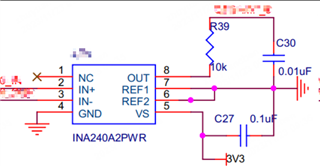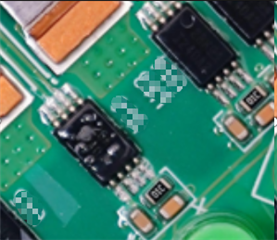Dear TI Experts and Guru,
We have a single malfunctioned INA240 with a configuration of GND reference output, and would like to check how it was damaged.
For a normal device when powered, the impedance between output pin and GND is about 0ohm measured by DMM. When our differential input is about 0.6mV, our output voltage is about 33mV.
For the malfunctioned device, the impedance between output pin and GND is about 40ohm measured by DMM. Whatever its input is, Its output voltage is fixed at -0.4mV.
When not powered, the impedance between output and GND of both cases are the same, about 370kohm.
Hope you can shed some light on how to anaylze this problem. And bty, how shall we understand that the impedance between output and GND is about 0ohm for the normal case?
Thanks,
Yuanchen



